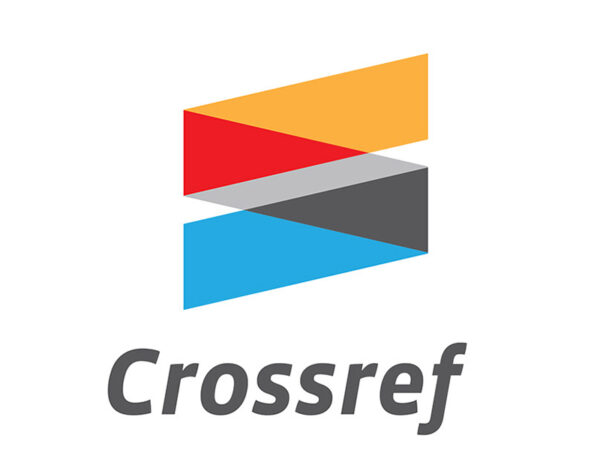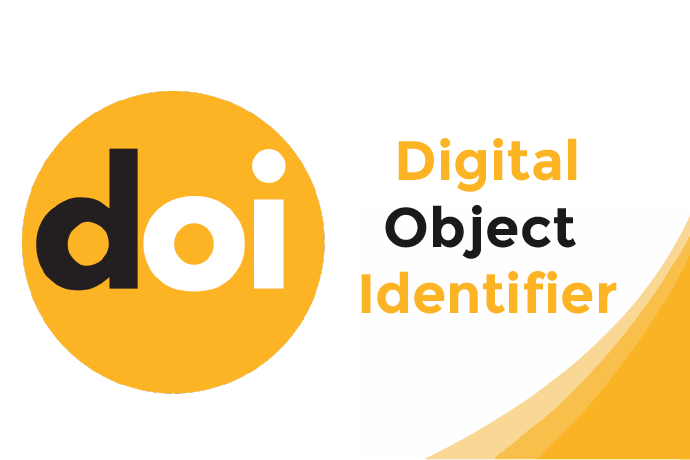Analysis of Textual Feedback of Students for Course Evaluation in Universities Through Machine Learning Algorithms
Abstract
Many educational institutions worldwide make significant efforts to collect student feedback to understand their perspectives on the courses and faculty. This feedback is used to enhance the institution's environment. In this modern world, institutions use data collection techniques to gather feedback. However, they lack the proper techniques to analyze and utilize this data to improve the educational quality of the institute using textual feedback. This study presents techniques for analyzing the written feedback from students, which was collected for course evaluation over a year. This paper focuses on techniques including Multinomial Naive Bayes Classifier, Long Short-Term Memory(LSTM), and Random Forest to enhance the outcomes of sentiment analysis. Ultimately, our efforts resulted in the LSTM achieving 97.45% accuracy during model testing for three types of sentiments: positive, neutral, and negative. This paper also aims to identify a clear research gap in this field and discusses the work of other researchers, including their less accurate models from the past. We also discuss the processes of collecting a sufficient amount of data to train this model, and then utilize a set of 25,689 data points for training. Furthermore, this paper primarily focuses on enhancing the quality of education. The initial model has been implemented at Balochistan UET Khuzdar, and it has produced satisfactory results. In the future, efforts will be made to find the perfect way to enhance the quality of education.
References
[2] E. Cambria, B. Schuller, Y. Xia, and C. Havasi, “New avenues in opinion mining and sentiment analysis,” IEEE Intell Syst, vol. 28, no. 2, pp. 15–21, 2013, doi: 10.1109/MIS.2013.30.
[3] Mahāwitthayālai Songkhlānakharin. College of Computing, C. Electrical Engineering/Electronics, IEEE Thailand Section, and Institute of Electrical and Electronics Engineers, The 17th International Conference on Electrical Engineering/Electronics, Computer, Telecommunications and Information Technology : ECTI-CON 2020 : 24-27 June 2020, virtual conference hosted by College of Computing, Prince of Songkla University.
[4] T. Shaik, X. Tao, C. Dann, H. Xie, Y. Li, and L. Galligan, “Sentiment analysis and opinion mining on educational data: A survey,” Natural Language Processing Journal, vol. 2, p. 100003, Mar. 2023, doi: 10.1016/j.nlp.2022.100003.
[5] Z. Kastrati, F. Dalipi, A. S. Imran, K. P. Nuci, and M. A. Wani, “Sentiment analysis of students’ feedback with nlp and deep learning: A systematic mapping study,” Applied Sciences (Switzerland), vol. 11, no. 9. MDPI AG, 2021. doi: 10.3390/app11093986.
[6] W. Shen, International Working Group on Computer Supported Cooperative Work in Design, Institute of Electrical and Electronics Engineers, and M. IEEE Systems, Proceedings of the 2013 IEEE 17th International Conference on Computer Supported Cooperative Work in Design (CSCWD) : June 27-29, 2013, Whistler, BC, Canada.
[7] M. Ali and A. Imdad, “Sentiment Summerization and Analysis of Sindhi Text,” International Journal of Advanced Computer Science and Applications, vol. 8, no. 10, pp. 296–300, 2017, doi: 10.14569/ijacsa.2017.081038.
[8] N. Ahmed, M. A. Khouro, A. Khan, M. Dawood, M. A. Dootio, and N. U. Jan, “Student textual feedback sentiment analysis using machine learning techniques to improve the quality of education,” Pakistan Journal of Engineering, Technology & Science, vol. 11, no. 2, pp. 32–40, Dec. 2023, doi: 10.22555/pjets.v11i2.1039.
[9] D. D. Dsouza, Deepika, D. P. Nayak, E. J. Machado, and N. D. Adesh, “Sentimental analysis of student feedback using machine learning techniques,” International Journal of Recent Technology and Engineering, vol. 8, no. 1 Special Issue 4, pp. 986–991, 2019.
[10] IEEE Computer Society. Malaysia Chapter, IEEE Computer Society, Institute of Electrical and Electronics Engineers, S. IEEE Conference on Open Systems (2013 : Kuching, and S. IEEE Conference on Wireless Sensors (2013 : Kuching, IC3e 2013 : 2013 IEEE Conference on e-Learning, e-Management and e-Services : 2-4 December 2013, Kuching, Sarawak, Malaysia.
[11] IEEE Communications Society and Institute of Electrical and Electronics Engineers, 2017 International Conference on Advances in Computing, Communications and Informatics (ICACCI) : 13-16 Sept. 2017.
[12] Z. Kastrati, B. Arifaj, A. Lubishtani, F. Gashi, and E. Nishliu, “Aspect-Based Opinion Mining of Students’ Reviews on Online Courses,” in ACM International Conference Proceeding Series, Association for Computing Machinery, Apr. 2020, pp. 510–514. doi: 10.1145/3404555.3404633.
[13] I. Ali Kandhro, M. Ameen Chhajro, K. Kumar, H. N. Lashari, and U. Khan, “Student Feedback Sentiment Analysis Model Using Various Machine Learning Schemes A Review,” Indian J Sci Technol, vol. 14, no. 12, pp. 1–9, Apr. 2019, doi: 10.17485/ijst/2019/v12i14/143243.
[14] H. Zhao, Z. Liu, X. Yao, and Q. Yang, “A machine learning-based sentiment analysis of online product reviews with a novel term weighting and feature selection approach,” Inf Process Manag, vol. 58, no. 5, Sep. 2021, doi: 10.1016/j.ipm.2021.102656.
[15] N. Ahmed, “A review of existing Machine Translation Approaches, their Challenges and Evaluation Metrics,” Pakistan Journal of Engineering, Technology & Science, vol. 11, no. 1, pp. 29–44, Dec. 2023, doi: 10.22555/pjets.v11i1.1002.
[16] M. M. Almosawi and S. A. Mahmood, “Lexicon-Based Approach For Sentiment Analysis To Student Feedback.” [Online]. Available: http://www.webology.org
[17] Z. Nasim, Q. Rajput, and S. Haider, “Sentiment analysis of student feedback using machine learning and lexicon-based approaches,” International Conference on Research and Innovation in Information Systems, ICRIIS, pp. 1–6, 2017, doi: 10.1109/ICRIIS.2017.8002475.
[18] G. S. Chauhan, P. Agrawal, and Y. K. Meena, “Aspect-based sentiment analysis of students’ feedback to improve teaching–learning process,” in Smart Innovation, Systems and Technologies, Springer Science and Business Media Deutschland GmbH, 2019, pp. 259–266. doi: 10.1007/978-981-13-1747-7_25.
[19] D. K. Dake and E. Gyimah, “Using sentiment analysis to evaluate qualitative students’ responses,” Educ Inf Technol (Dordr), vol. 28, no. 4, pp. 4629–4647, Apr. 2023, doi: 10.1007/s10639-022-11349-1.
[20] P. Mata, J. X. Rita, A. Batista, and J. X. Rita, “Sentiment analysis – a literature review,” Academy of Entrepreneurship Journal, vol. 27, no. SpecialIssue 2, pp. 1–10, 2021.
[21] B. K. Bhavitha, A. P. Rodrigues, and N. N. Chiplunkar, “Comparative study of machine learning techniques in sentimental analysis,” Proceedings of the International Conference on Inventive Communication and Computational Technologies, ICICCT 2017, no. Icicct, pp. 216–221, 2017, doi: 10.1109/ICICCT.2017.7975191.
[22] IEEE Computational Intelligence Society, International Neural Network Society, Institute of Electrical and Electronics Engineers, and B. C. ) IEEE World Congress on Computational Intelligence (2016 : Vancouver, 2016 International Joint Conference on Neural Networks (IJCNN) : 24-29 July 2016, Vancouver, Canada.
[23] K. S. Krishnaveni, R. R. Pai, and V. Iyer, “Faculty rating system based on student feedbacks using sentimental analysis,” 2017 International Conference on Advances in Computing, Communications and Informatics, ICACCI 2017, vol. 2017-Janua, pp. 1648–1653, 2017, doi: 10.1109/ICACCI.2017.8126079.
[24] P. P. A., “Performance Evaluation and Comparison using Deep Learning Techniques in Sentiment Analysis,” Journal of Soft Computing Paradigm, vol. 3, no. 2, pp. 123–134, Jul. 2021, doi: 10.36548/jscp.2021.2.006.
[25] M. Baygin, “Classification of Text Documents based on Naive Bayes using N-Gram Features,” 2018 International Conference on Artificial Intelligence and Data Processing, IDAP 2018, pp. 1–5, 2019, doi: 10.1109/IDAP.2018.8620853.
[26] X. Fang and J. Zhan, “Sentiment analysis using product review data,” J Big Data, vol. 2, no. 1, 2015, doi: 10.1186/s40537-015-0015-2.
[27] “SENTIMENTAL ANALYSIS OF STUDENT FEEDBACK USING MACHINE LEARNING TECHNIQUES.”







